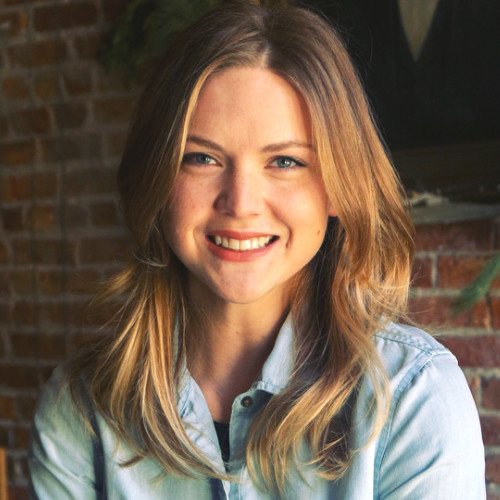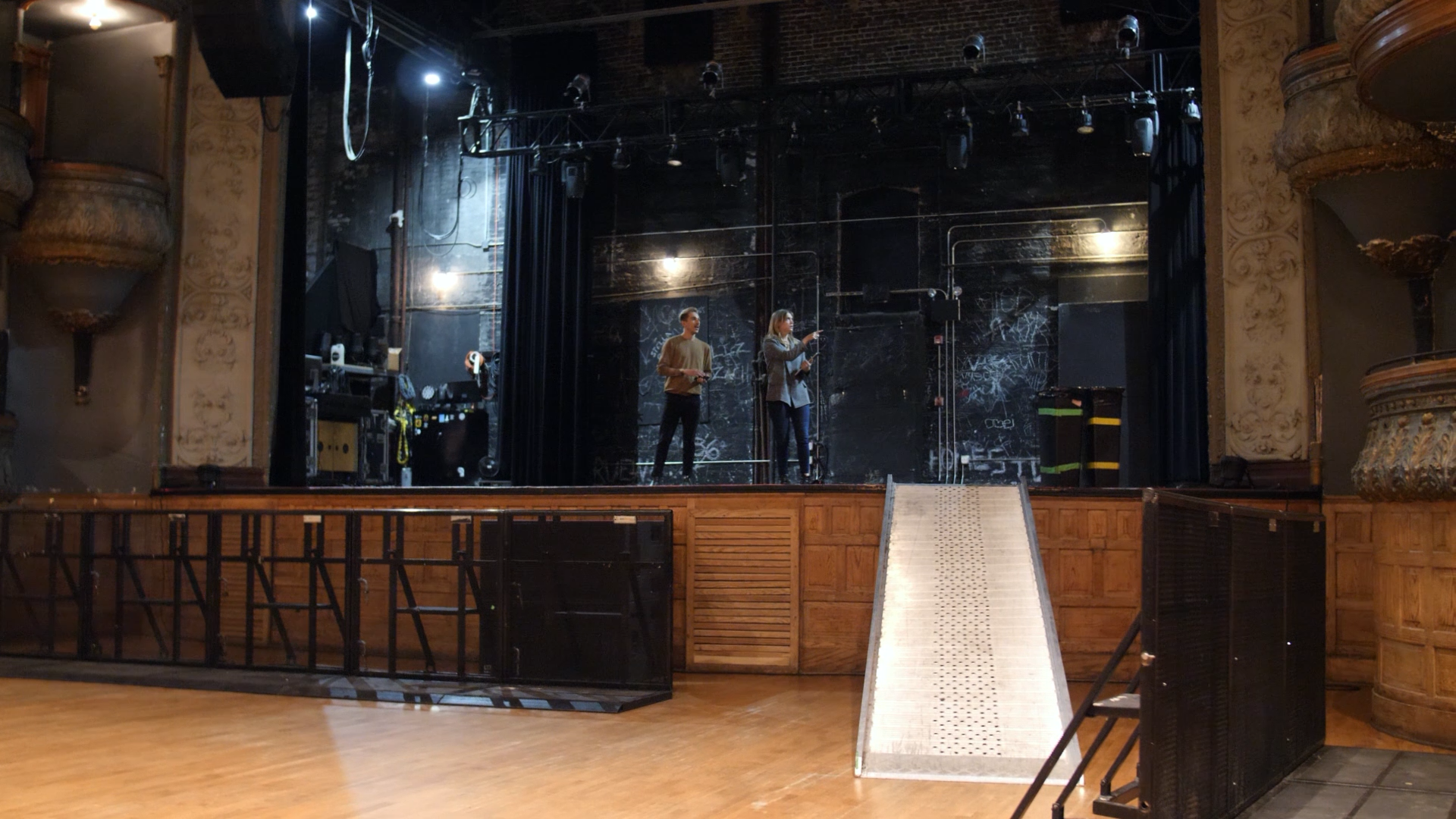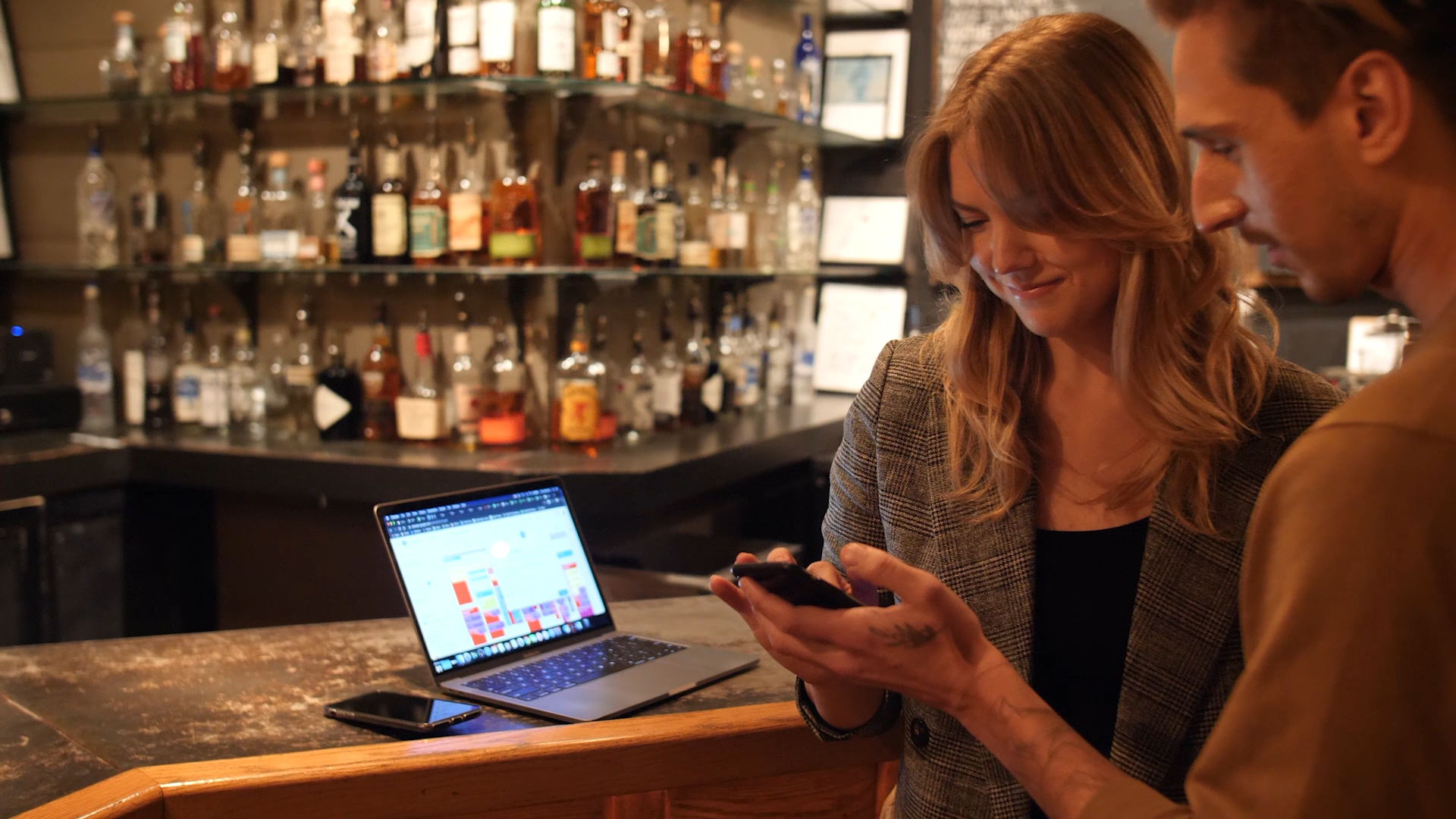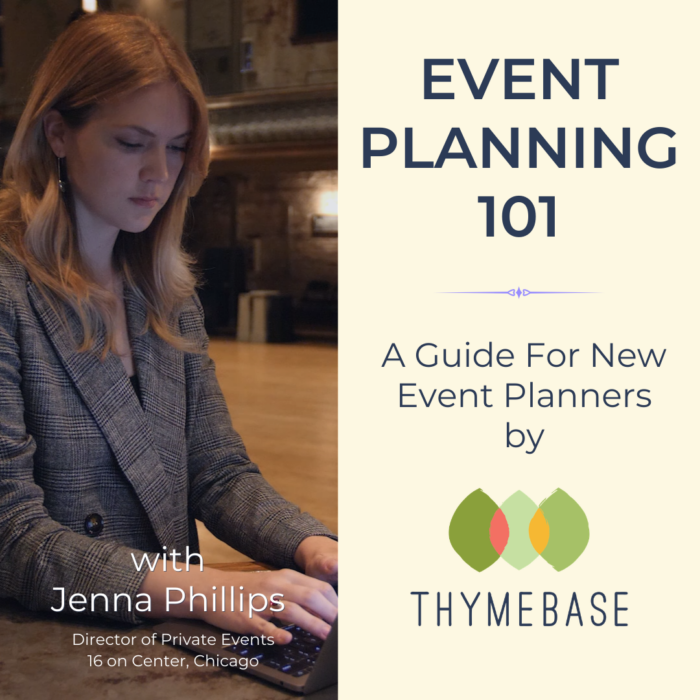This Event Planning 101 guide is for new planners at the start of their career, by a highly experienced event planner. It began as a discussion of event planning tips that Jenna had for new planners. As our conversation expanded, so did the details included here. And what started as a simple chat ended up as something of value, worth sharing.
Why A Guide To Event Planning For Planners?
At ThymeBase, we build event planning software. While we have a fantastic team with a significant amount of event experience as planners, vendors, and designers, we talk to event planners every day. In these interactions with planners across the US and the world, we’ve heard of the importance of mentorship. The best event planners learn on the job, and through internships, mentorships, and partnerships.
So we began a series of interviews with luminary event planners, and it’s informed how we build our software, but also what we share online. And so the team here at ThymeBase decided to create a short guide to event planning.
Who Is Jenna Phillips

Jenna Phillips is our in-house hero, our Chief Event Planner, and all-round event expert. But she’s also the Director of Private Events for 16 on Center, a collective of Chicago venues. In her position, Jenna oversees hundreds of events each year all across the city, and she manages a team of planners.
Once, I asked Jenna to describe her work as an event planner. And here’s how she put it:
A good planner is someone who can be creative when working with hurdles.
“A good planner is someone who can be creative when working with hurdles. In every situation, you need to be able to make things work with what you’ve got.”
“At every event, there are last-minute changes or something that you thought might work aesthetically, just doesn’t. You need to be able to pivot at a moments’ notice.”
“There are wild things that happen that you have to just tackle; We’ve had 250 people show up on a Friday when they were contracted for Saturday – we still pulled that sh*t off. I knew a planner who has super-glued a mother-of-the-bride’s toenail back on to her toe. I’ve grabbed scissors and cut off the bottom 1/3 of a bride’s tulle dress so she could dance more easily.”
Being an event planner is about having the confidence to roll up your sleeves and take care of things.
“Being an event planner is about having the confidence to roll up your sleeves and take care of things. That is what separates a good planner from someone who could just as easily throw up their hands and say “not my problem.” But the personal ‘win’ and in-the-moment craziness is always worth it in my mind, and it feels extra badass when you’re wearing a walkie talkie (and HEELS!)”

Event Planning 101: The Three Pillars of Planning For Beginners
Event Planning 101 begins with understanding the three foundations of successful planning a successful event: Visualization, Coordination, and Execution.
It may appear overly simplistic to summarize the art and science of event planning into only three pillars, but here’s the deal. Each of these essential skillsets requires effort, practice, and experience. Still, if you’re starting out on your event planning career, keep these in mind, and you’ll have a headstart on the road to serious expertise.
Visualization, Coordination, and Execution, in and of themselves, are only high-level concepts. The trick is in mastering the granular techniques and skills throughout your career as an event planner. And that’s Event Planning 101 in a nutshell.
Event Planning Foundation #1: Visualization

Visualization is the process of understanding the experience you’ll be creating. It begins with knowing your client, understanding the guest experience, and setting clear expectations.
Visualization for an event begins the moment you meet your client.
According to Jenna, “Visualization for an event begins the moment you meet your client. When that first lead comes through, or that first inquiry comes through, that’s when the client sets the tone for what they want their guest experience to be.”
In your early conversations with clients, you’re gathering data, and already visualizing the event. You’re answering questions about the type of event. Is it a social event? Or corporate, or perhaps it’s a fundraiser. Is it private or public? Will tickets be sold, and will there be a guest list?
With this information, you’re able to create a concept of what the event will look, and feel like. It’s also the right time, Jenna explains, to set expectations.
At this point in the event planning stage, you’re also setting your expectations with your client.
“At this point in the event planning stage, you’re also setting your expectations with your client. You’re letting them know what you are going to deliver, what your promises are, what it means when they sign a contract with you.”
“You’re drawing out from the client what their expectations are of you, and in what ways are you going to need to finesse things for this client? Is the client going to be hands-on? Or are they laid back about what they want their guest experience to be like? So this is an important stage in the event planning process in that you really need to make your client feel as though you really understand what it is that they want.”
Related article: Client Indecision and How Event Planners Can Work Through It
What Signals To Look For When Talking To Your Client
So we’re talking about setting expectations and understanding your client, but that’s easier said than done, right? I asked Jenna if she could share some advice on what to look for.
“The first thing is I try to understand is whether or not this client is practiced in hosting events. Are they familiar with the process of placing a rental order or dealing with a venue or working with multiple contracts at one time?”
A good event planner is well-rounded enough to be able to work with the neediest clients or the easy-breeziest client.
“When your client has not thrown many events or worked with an event planner in the past, you’re going to do a lot more handholding and explaining. You might need to go a few steps further in each process.”
“For example, when you’re helping them contract a caterer, you might need to help them understand what menu items would be best for their event, based on whether or not guests have a seat to sit at. You might help them with quantities of passed appetizers or what they should or should not serve at the bar, based on what kind of experience they want their guests to have.”
“People who host events all the time probably have a good idea of what it is that they want and they expect you to help them with. So one is not necessarily better than the other. I think a good event planner is well-rounded enough to be able to work with the neediest clients or the easy-breeziest client.”
How To Set Client Expectations As A Beginner Event Planner
A positive relationship with your clients is built on clear communication and understanding. And that’s where setting expectations come in.
See, not everyone gets what an event planner does, and what their role is in the successful planning of an event. For planners early in their careers, setting explicit expectations allows you to only take on what you can genuinely handle. It helps to avoid over-promising and under-delivering.
People think we just wave a magic wand.
“Sometimes,” Jenna told me, “people think we just wave a magic wand and everything is there and ready for you. By setting expectations, I am very clearly articulating in writing and contract language to a potential client what it is that they can expect from me. What, exactly, are my services?”
So event planners are stating what the client can count on them doing. And what is not within the scope of the contract.
Jenna explains what happens when this isn’t clear. “When there are so many vendors involved in one event, it’s hard for a client to really understand who’s in charge of what. I’ve been a day-of wedding coordinator for a client who told me to just grab a knife and go cut the cake. But that’s not a thing I can do.”
So Jenna recommends laying out and getting agreement from the client on each stage of the event:
- Planning and coordinating with vendors
- What you’ll be doing on-site on the day of the event
- What the client can expect afterward
How To Handle Client Misunderstandings
Event planners should have some flexibility during the contract negotiations. While you should know your standard scope is, be willing to bend the rules. Whether it’s a great booking, a favor to a friend, you should be okay with going beyond your typical responsibilities.
You never really want to say a flat out no to someone
Jenna says, “It’s nice to have a little bit of wiggle room in your contract language. Or be willing to amend when there are situations where perhaps I could step in a little bit further and take on an additional task that I wouldn’t necessarily do. As long as it’s clearly stated whether the compensation changes or if it negates something else that might have been expected of me. An event planner should be able to adapt a contract to fit a client’s needs to a certain degree.”
But what if the expectations are just too darn much? Event planners need to be willing to walk away. It’s good for you to know your limits, but it’s also the right thing to do for the client. But you can part ways positively.
Jenna shared what she does. “Maybe there’s someone else out there that does provide those services. You might reach out to your network and see if there’s somebody who would want to take on this client or has some advice on how to gracefully bow out.”
“But you never really want to say a flat out no to someone. Give reasons why, or have a conversation about how you can still make the client happy without necessarily bending too much or discounting your own services.”
Figuring Out The Guest Experience
Understanding the guest experience is a significant part of the visualization process. Before you begin the actions of planning an event, you need a clear understanding of what the client wants their guests to experience.
Jenna seeks to understand the overall vibes she and the client want to set. “As soon as people walk in the door, how are we making it so that they feel comfortable and calm? Those are the two biggest things. We don’t want people walking through the door and wondering where to hang up their coat. Every step of the guest experience, we want interaction and engagement. Whether it’s from me, from my staff, or the venue staff, guests should feel as though they’re being ushered gracefully through every point of the event.”
“And during the visualization process, I’m extracting from the client how they want to make this happen.”
As soon as people walk in the door, how are we making it so that they feel comfortable and calm?
“Are we going to have way-finding signage? Or will there be people standing there, helping guests figure out where they need to be? Are we going to pass a cocktail or a glass of champagne to get a drink in everyone’s hand and really set the tone of the party right away? Are there programs? Is there music playing? If so, are we trying to get people to dance? Are we trying to get them drunk?”
Now, you don’t necessarily need to pepper the client with questions. You can uncover many details based on the type of event.
“These are the kind of questions that we can answer, often in the first conversation with a client, by merely knowing the type. Is it a wedding? A meeting? Or a dinner event? It’s like a choose-your-own-adventure after that but start by getting the ambiance right and the atmosphere set. Focus on ensuring guests feel the way that they should as soon as they walk in the door.”
Event Planning Foundation #2: Coordination

Coordination is the foundational concept that seems to most obvious. When it comes to event planning 101, this is what draws in those of us who love, love, love getting sh*t done.
You should consider yourself the master and commander of all the information.
But coordination isn’t only about being an excellent day-of coordinator marshaling the catering staff, deploying the DJ, or negotiating the bar contract for one’s clients. Coordination is also, perhaps even mostly, about managing and sharing information.
Jenna says, “You should consider yourself the master and commander of all the information coming from clients, vendors, and from event partners. As an event planner, you’re collecting and synthesizing all of the information and directives for everyone.”
“All this information will need to be distributed to everyone involved before the event, so everyone is on the same page. Sometimes the information is presented in a long, detailed event timeline. Sometimes it’s a basic run of show document.”
“How the information is shared will depend on the event type and how much activation has to happen during it. Consider how many vendors are actively working on the event. Also, consider how many steps of service there are for food and beverage? These things all come into play, and they have to be organized in a way that anyone can pick it up, read it, and know exactly where they need to be and when.”
And that’s the crux of it all. Event planners need to harvest details from perhaps hundreds of emails, text messages, phone calls, WhatsApp messages, and in-person conversations. That information needs to be managed, processed, distributed, and followed-up on too.
Common Coordination Mistakes New Event Planners Make
A mistake typical of a beginner event planner is simply forgetting to update the right people.
Often, a small detail can have serious ramifications if not shared correctly. It’s absolutely critical to note everything down, but it’s not enough to write everything down. Every item of information has to be distributed to whoever needs it.
The common mistake is in not alerting people to that change.
Jenna says, “Say you’ve updated the timeline or added to the task list with some important piece of information. That detail needs to be communicated to particular people, the common mistake is in not alerting those people to that change.”
“I think the most significant disconnect can happen when I, as the planner, know exactly what needs to happen and where everyone needs to be and when. But if I’m not communicating those changes and updates as they come, I’m leaving very, very large possibilities of things not happening at the pace or the sequence in which they should.”
How To Manage Information Flow
Every single event planner handles this a little bit differently. And to be sure, there are pros and cons to every system. The only important factor to use when evaluating your process of managing information is this: does it work for you?
Many planners, probably more than you’d imagine, use notebooks and color-coded post-it notes. And there’s absolutely nothing wrong with that. But the problems arise when you’re juggling digital sources of information. Are you working off your laptop, your phone, or your notebook? So even if you’re a pen-and-paper person, you still will need to move the information out of the journal and into a digital format. You can’t share your notebook with vendors.
Some use Excel for event planning, and others prefer Google’s G Suite to store and manage the myriad of event details. Neither are great on mobile devices. Nor do they don’t have in-built notifications and reminders. But Google Docs is easily shareable with clients, and Excel is familiar to many.
Then there is event planning software. Within the software space, there are tons of differences too. Some, like ThymeBase, focus on auto-updating and shareable timelines with a mobile-first design. Others, like AislePlanner and Planning Pod, are all-in-one solutions but tend to be high-priced and noisy with feature bloat. The positive thing about event software is that it does provide a designated “space” for all your event-specific information.
While you’re still figuring out your workflow, consider the following: Do you prefer working on your mobile devices? Do you need calendar integration? Are you working with a team? Are you comfortable designing and formatting pdf timelines? And do you need your life integrated between other software you use?
It’s also a good idea to talk about information sharing with your clients and vendors. Learn what they’re comfortable with. Some software requires log-ins for clients, while other information-sharing options, like regular email or G Suite, are almost universally accepted.
Overall, balance comfort and efficiency. And whatever you do, build a habit of double and triple-checking information two weeks and two days out from the event.
Event Planning Foundation #3: Execution

The day of the event is when everything comes together. At this point, all the hard work you’ve been doing for the last few months comes together and, hopefully, goes off well.
You’ll always have to deal with things going wrong. You should be mentally braced for that. But if you’ve done careful planning up to this point, you’ll be well-positioned to handle the disasters.
Load-in starts and vendors start showing up, that’s when you’re on, green light. Go time.
“The event happens,” according to Jenna, “as soon as the venue opens its doors. Load-in starts and vendors start showing up, that’s when you’re on, green light. Go time.”
“You have all of your information ready to go. It’s in a convenient place. It has been circulated to everyone who needs it, and at this point, you’re just kind of like plug and play. Checking off items on your task list.”
“You have everything that needs to happen for set up. You have everything that needs to occur on a production level in terms of activations, where the room needs to be engaged. And then you have a plan for getting everyone out and how the space needs to be once the event is over. So from the very first moment of setup through the very end of breakdown and until you walk out the door, it’s showtime. That’s execution.
What Happens When Things Go Awry?
But things will go wrong. The weather will be uncooperative, the electricity will go out, a client will have a bad hair day.
“When things go wrong,” Jenna says, “often it is for reasons that are completely beyond your control. If guests show up late, or the host has an emergency, or vendors aren’t showing up on time, these are certainly not ideal, but they definitely do happen. Hopefully, you have a relationship and an understanding with your client based on the visualization stage, where you set expectations. They know that you can’t control traffic, and you can’t control snowstorms. You should have had those kinds of conversations.”
When things go wrong, often it is for reasons that are completely beyond your control.
“Then, at whatever point things start to fall behind, you just have to be very, very communicative with everyone involved. Let guests, and vendors know what the changes are. You’ll tell people that we’re pushing everything back 20 minutes and see if we can catch back up.”
“More often than not, it’s easy to catch back up to where you need to be. If you’re writing a realistic timeline, you should be giving yourself cushions every now and then. And maybe allowing yourself a little bit more time than it will actually take just to make up for those hiccups that can so often happen.”
Execution Mistakes That Beginner Event Planners Make
There are many mistakes that new event planners will make, but that’s just part of the learning process. Experience, after all, is just another word for mistakes you’ve made in the past. But for all the small errors you’ll make, Jenna thinks there’s one critical thing to practice right from the beginning.
“I think a new planner needs to practice being an extrovert,” Jenna says. “It can be hard for some people, but practice speaking up and making yourself present and being visible to clients and vendors at all times.”
Practice speaking up and making yourself present and being visible to clients and vendors at all times.
“You truly do need to be the point of contact for so many different people who have varying needs. Whether the band needs an extension cord or the caterer needs more ice, you have to help facilitate those. You might not be going to the store yourself to go get it, but you have to be the one to communicate where it’s going to come from.”
“And so, you need to be able to put yourself out there in a way that maybe you’re not super comfortable with. But ultimately, in the end, it does make for a better, more well-rounded planner to be approachable and visible at an event.”
So my biggest advice is to practice just being a people person and putting yourself out there as much as possible.
“If you don’t do that, people are going to just look for someone else with their questions. They’re going to look to the venue, and the venue might not be the best source.”
“So my biggest advice is to practice just being a people person and putting yourself out there as much as possible.”
Event Planning 101 Is Just The Beginning
If you’ve made it this far in Event Planning 101, you already have a clear understanding of what makes an event planner great at their craft. This is only the beginning of a journey in which every event will bring something new.
Below are some resources to help you as you create experiences for clients, and for yourself:
- ThymeBase event planning software – Free event planning software that is mobile-friendly with a timeline make, task-list manager and more.
- The ThymeBase Blog – the latest event planning industry news, tips, and interviews with event planners.


